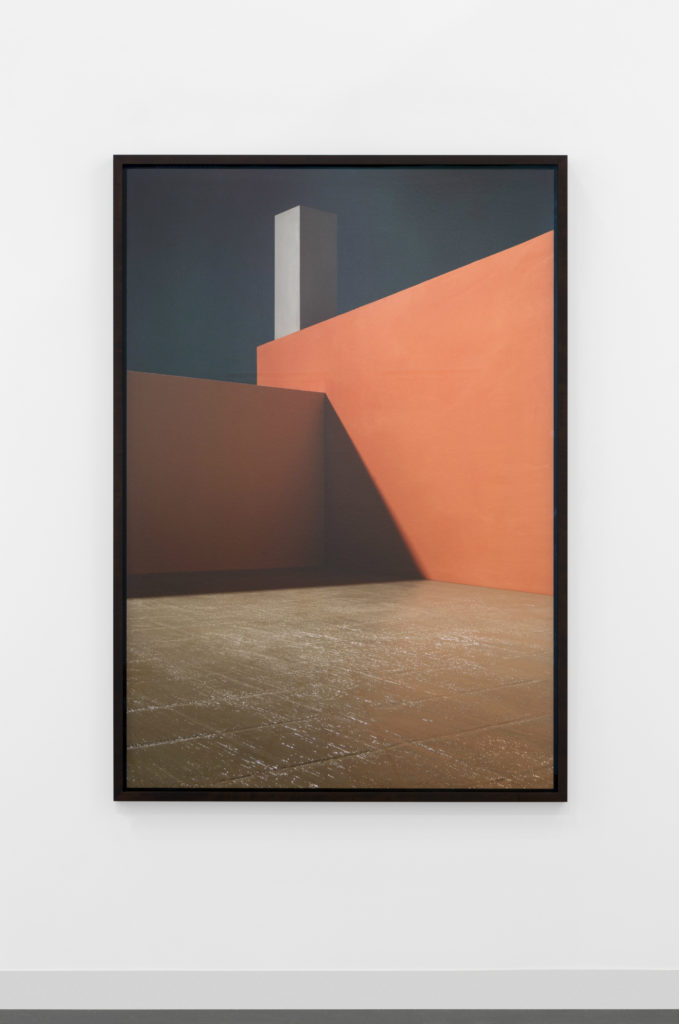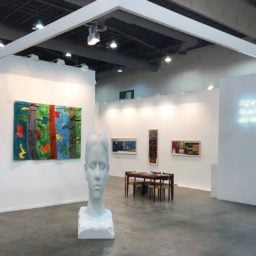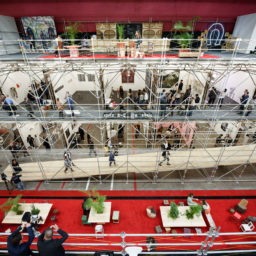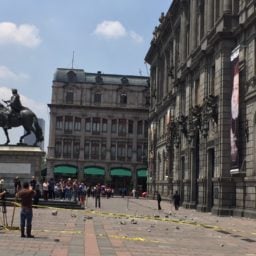Visitors to Zona Maco, Mexico’s and arguably Latin America’s leading international art fair, can help locals rebuild their homes after the earthquake that hit the country last September. The artist Gabriel Orozco has designed hoodies priced at $45 and t-shirts at $28 to benefit Los Angeles en México, a Mexican-American nonprofit founded in response to the disaster.
The clothing was snapped up by collectors as soon as the fair’s 15th anniversary edition opened to invited guests on Wednesday, February 7, during a week packed with gallery openings, dinners, and brunches. Alongside the established, elegant Zona Maco, which hosted 170 galleries, the Material fair in the historic Frónton México provides a destination for work by emerging artists and younger dealers.
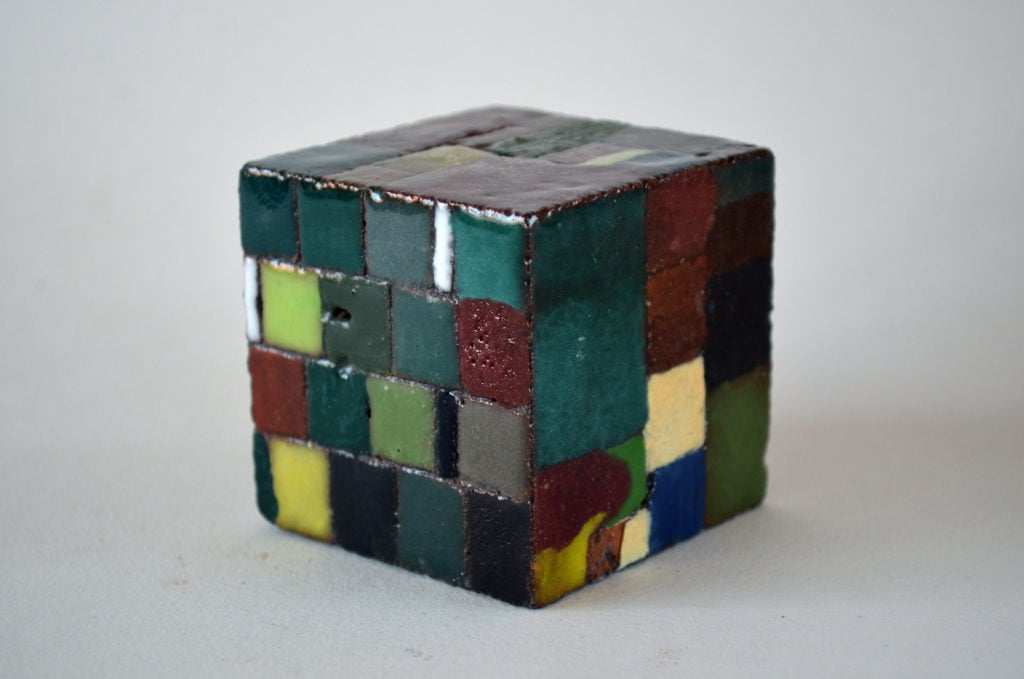
Damián Ortega, one of 100 painted ceramic cubes will fund 100 homes in Oaxaca, courtesy of Studio Damián Ortega.
Orozco’s project was just one of many examples of artists working to aid the recovery effort following the earthquake—and capitalizing on a captive audience of collectors and dealers to do it. Meanwhile, many galleries opted to present work that highlights the ongoing cultural exchange between Mexico and its neighbor to the north.
The Mexican artist Damián Ortega is offering painted ceramic cubes for sale, a fundraising effort launched to coincide with the fair. The 100 unique works available for $500 each at kurimanzutto, Ortega and Orozco’s gallery in Mexico City. All proceeds go to an innovative project that helps people to self-build 100 homes in the earthquake-hit region of Oaxaca.
Both artists also have work on kurimanzutto’s stand at Zona Maco. Ortega’s sculpture, Broken sac (2016, price undisclosed), is made from the famous clay of Oaxaca, while Orozco is showing a new stone sculpture inspired by the art of Bali, where he is now based.
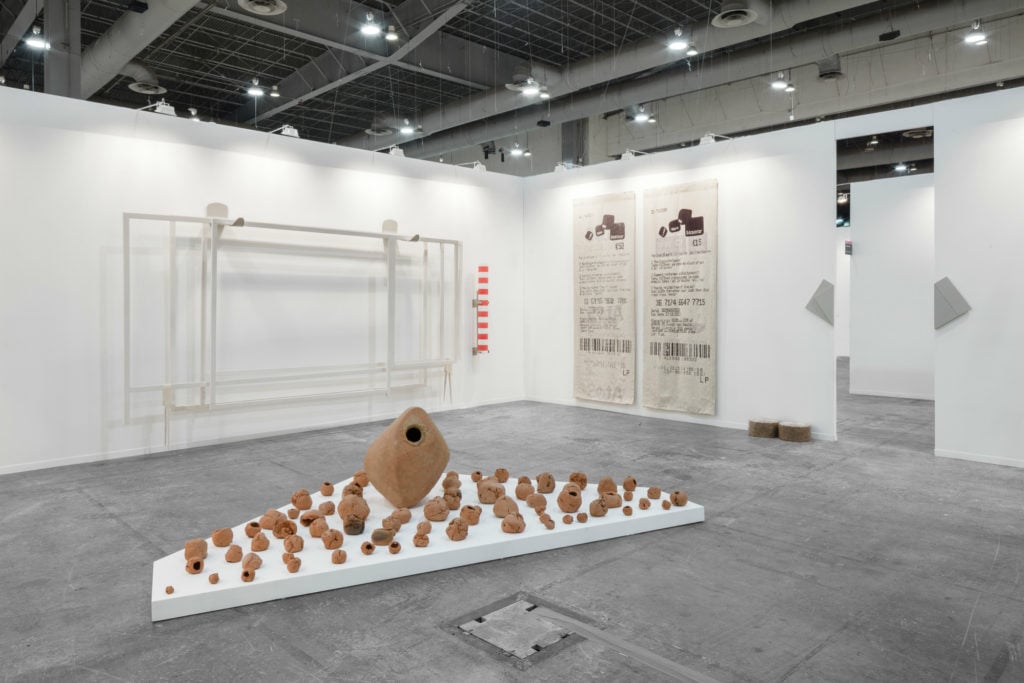
Damián Ortega, Broken sac (2016), photograph by Abigail Enzaldo, courtesy of kurimanzutto. Mexico City, 2018.
Another of Mexico’s leading artists, Jose Dávila, opened his solo show at Galeria OMR in Mexico City ahead of the fair. He also has new works at the booth of New York gallery Sean Kelly, who is returning to Zona Maco for the second time.
Kelly said that he was happy to be back in Mexico City, noting the positive mood despite the earthquake. “We made a proactive choice to come for the first time [last year] to show solidarity,” he said. “We were so appalled by the US president’s language.”
Works that might resonate with Mexican collectors were scattered around the fair. Lisson Gallery and Sean Kelly, for example, are both showing photographic works from a new series by the American artist James Casebere that is based on Casa Luis Barragán, the home of the great Mexican Modernist architect.
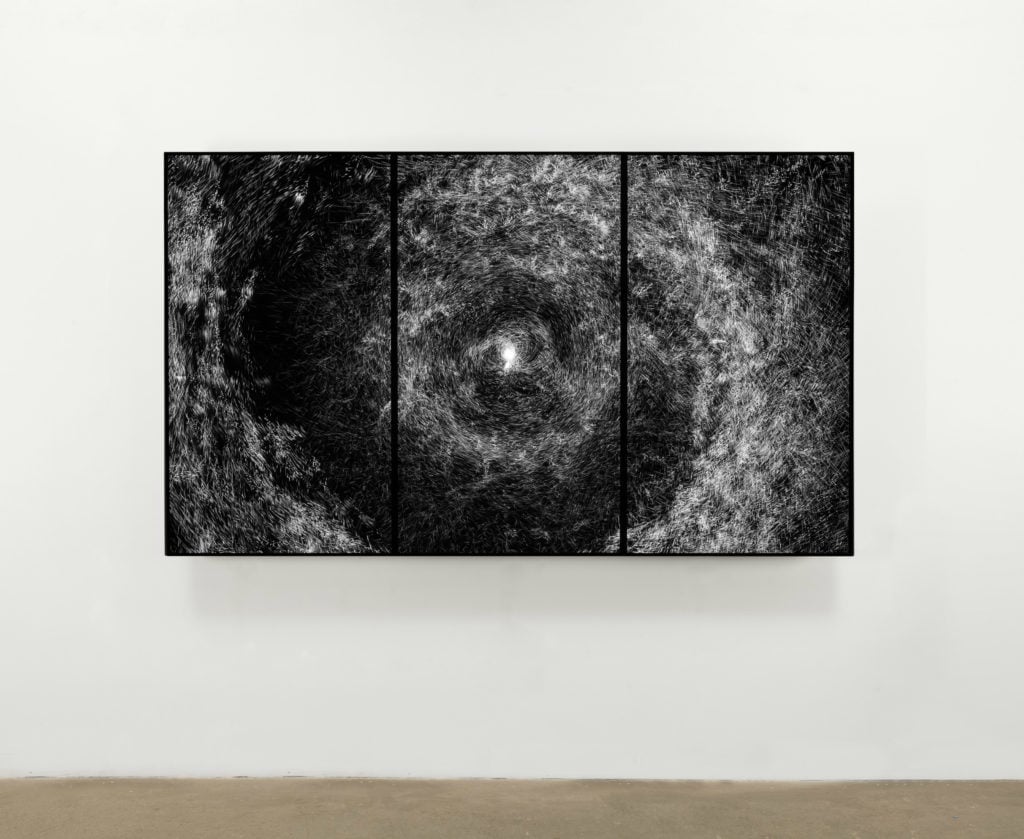
Leo Villareal, Signature of the Invisible (2018), copyright of the artist, courtesy of Pace Gallery.
Meanwhile, American and other international collectors seemed to have voted with their feet, ignoring Trumpian tweets about the dangers of visiting Mexico. “We have friends in Dallas, Houston, and LA” who are at the fair, Kelly noted.
Ben Strauss-Malcolm, a Pace director, said that the gallery is making its debut at the Mexico City fair partly because of its presence in Palo Alto, California. “There is a whole belt of Californian collectors who have homes here,” he said. “It’s an important region to explore.” And there are more international collectors coming as well, thanks to buzz around the city and the fair, he added.
The outside of Pace Gallery’s booth features monochrome works by American artists, including a Tony Smith sculpture, Light Box (1961), on offer for $150,000, which is a preview of the gallery’s solo booth of the late artist’s work at the ADAA’s Art Show in New York later this month. Nearby is a new, 25 million-pixel light work by Leo Villareal, Signature of the Invisible (2018), also on offer for $150,000.
Many of the works at the fair reflect the close and complicated history between the two countries, long before the 45th US president’s election on an anti-Mexico ticket. This year, however, Zona Maco seems to embody the Truman doctrine: the US and Mexico as good neighbors. Overtly anti-Trump works are largely absent, however.
Proyectosmonclova of Mexico City is presenting a series of inkjet diptychs by the young Mexican artist Chantal Peñalosa, who photographed cloud formations from either side of the border—one in Tecate, Baja California, which is in Mexico, and the other in Tecate, California—on the same day.
And indeed, Donald Judd might never have made it to Marfa if he could have settled—as he originally planned—in Baja California, Mexico. Flavin Judd, the artist’s son and curator and co-president of the Judd Foundation, is due to speak at the fair on Thursday. And David Zwirner is presenting an untitled 1991 aluminum, green, and black acrylic wall-mounted box from the artist’s estate on offer for $850,000.
Paul Kasmin Gallery, meanwhile, is showing a vibrant, early painting by Jackson Pollock once owned by Andy Warhol. Called Composition with Oval Forms (1934–38), it was painted by Pollock at a time when he was immersing himself in the work, and left-wing politics, of his mentor, the Mexican muralist David Alfaro Siqueiros.
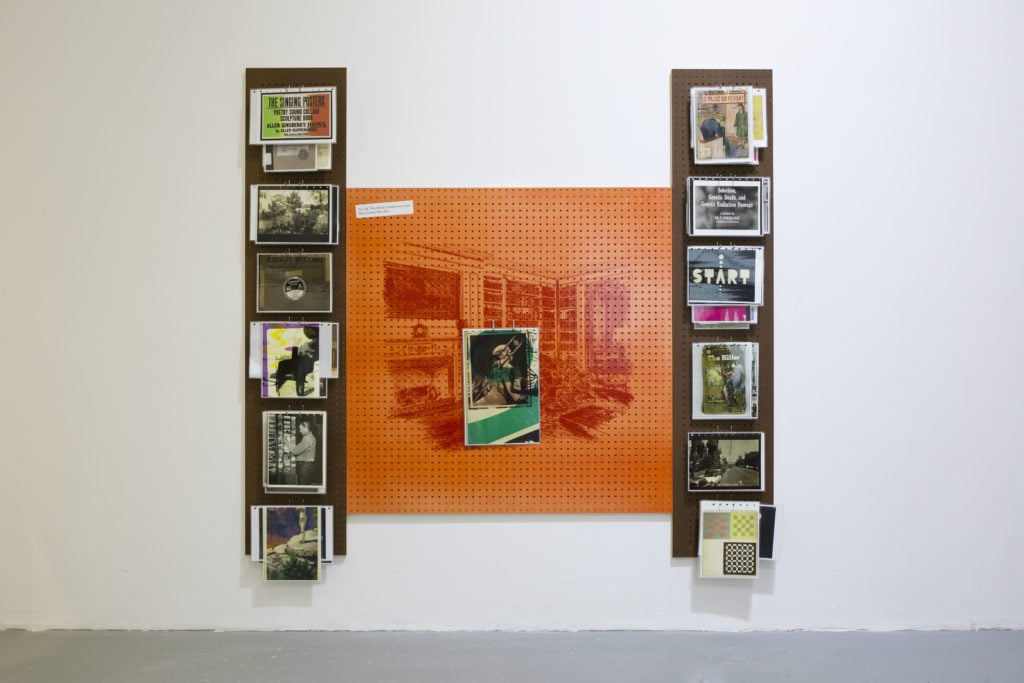
Allen Ruppersberg, Untitled (2017), courtesy of the artist and Parque Galeria.
Among the artists spotted at the fair was Sam Durant. After the year he has had back home, Mexico might seem like a haven for his politically charged work. The fearless Mexico City gallery Parque is showing Knowledge is Power! (2017), a dramatic red electric light box based on a Ferguson protest sign. (It is available in an edition of three for $60,000 each.) Parque is also organizing Durant’s first solo show in Mexico.
Ai Weiwei is in town too, visiting a show of work by Sean Scully, his former tutor at Parsons School of Design in New York, at the Barragán-designed stables in the suburbs of Mexico City. Two large abstracts from Scully’s “Landlines” series are on view at Blain|Southern’s stand, while Ai has a fantasy creature at Continua and painted pots at Lisson Gallery.
Mexico City’s oldest modern art gallery, GAM (Galeria de Arte Mexicano), which was founded in 1935, is showing two historic works by Diego Rivera, the Mexican master who also made his mark in the US. One is an untitled 1907 painting of an old woman, which was unknown until recently. Painted by Rivera in Spain at age 21, it was owned by a friend of the artist’s father and is on offer for $650,000.
During the VIP preview, GAM sold an even more historic woodblock from 1938, which was included in the Surrealist art show that launched the gallery in 1940. An homage to André Breton, the wild image of a brain, bloodshot eyes, and snarling mouth Community Vessels went to a private collector in Mexico for an undisclosed sum.
The leading Mexican-born curator Patrick Charpenel, who is the new director of New York’s Museo del Barrio, has co-organized “Parameters,” an installation of five video works by the American artist Bruce Nauman at Casa Barragán (on view through April 15). Visiting Zona Maco, he put the 15th edition of the fair into a wider context.
“It is important because it has grown as Mexico City has become a very important center of cultural production,” Charpenel said. “It is the Latin American fair that has become international.”
